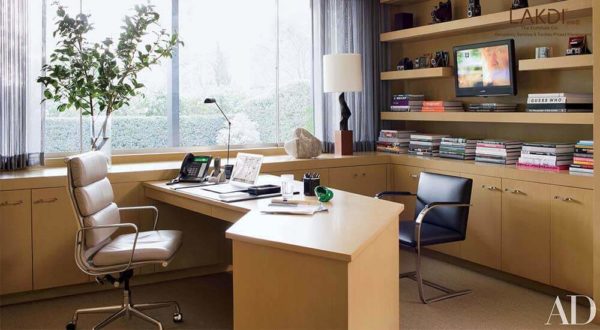10 Of The Best Bridal Flower Bouquet Options
1. Roses
Since a long time ago considered a symbol of excellence and love, roses are considered along with numerous myths and fantasies. Heartfelt writers and poets have used the flower as a similitude for feeling, excellence, passion and genuine affection. An elite player in the realm of weddings, the rose is a long way from exhausting, especially with regards to shading—roses are accessible in solid hues and bicolor varieties—there are even striped and tipped roses as well. In excess of 3,000 varieties of roses are developed economically, and many are accessible all year and are surprisingly reasonable. Furthermore, however roses are associated with a luxurious aroma, only one out of every odd rose is scented. Three fundamental types of roses are most mainstream for wedding flowers: crossover tea roses (the classic, consistently shaped business roses by and large seen at your neighborhood florist), spray roses (a rose with five to ten small heads on each stem, and a “characteristic, garden-developed” look) and nursery roses (expensive, older style varieties with bushy, open heads and delicious scents).
2. Tulips
In spite of the fact that tulips are most regularly associated with the Netherlands, this flower is really a local of Persia. Representing “consuming affection” and “cheerful years,” the tulip can be a significant wedding decision. This flower is filled in a wide scope of hues, including white and cream, pastels (pink, yellow, and peach), and energetic shades (red, red, orange, and purple). Accessible during a significant part of the year, the most well-known tulips are truly moderate, however, uncommon varieties can be expensive. The versatile tulip can upgrade both rich wedding settings and more casual venues, and function admirably in almost any detail at a wedding—from bouquets and boutonnieres to table arrangements. Three primary varieties are ordinarily used: Dutch tulips (normally seen at neighborhood florist shops and in gardens), French tulips (expensive and rich, with extra-long stems and huge tightened blooms), and parrot tulips (noted for their unsettled, striped petals in intense colors).
3. Calla Lilies
Also known as the arum lily, this exquisite, trumpet-shaped blossom began in Africa and symbolizes “eminent magnificence” in the language of flowers. The calla lily’s distinctive structure has been portrayed in craftsmanship nouveau and workmanship deco works, notwithstanding twentieth-century photography. Two types are usually accessible: a huge-headed assortment with a long, smooth stem suitable for tall arrangements or presentation-style bouquets, and a smaller than usual version ideal for small arrangements and boutonnieres. Smooth ivory is the most mainstream tone, yet calla lilies also come in yellow, orange, mauve-pink and dull purple (a stunning decision for a slightly edgier or chilly climate wedding bouquet). Get Flower delivery dubai from White Blossoms
4. Lily of the Valley
With little chime-shaped florets hanging from a meager stem, the lily of the valley is sometimes called “the stepping stool to paradise.” The fresh, perfumed scent from its modest flowers is unmistakable. In Norse folklore, the flower is connected to Ostara, the goddess of springtime—yet you probably recall it from Kate Middleton’s imperial wedding bouquet in 2011. And keeping in mind that most abundant throughout the spring, it remains accessible—however very expensive—most of the year. So while a fistful of lily of the valley may be your fantasy, a more moderate option might be to use just a couple of stems to infuse a bouquet or focal point with its brilliant aroma and sensitive surface. Most individuals know about the white assortment, yet lily of the valley also comes in an uncommon rosy-pink.
5. Hydrangeas
With its full bushy head and intense shades of pink, blue, burgundy and purple, it’s no big surprise the hydrangea represented “vanity” in the Victorian language of flowers (yet don’t stress, you’re not vain in the event that you love hydrangeas). Quite possibly the most famous hydrangea varieties change in shading from bubble-gum pink to sky blue as it grows, contingent upon the corrosive level of the soil. A stem or two of this reasonably estimated, scentless shrub flower fills out arrangements and bouquets, and a couple of sprigs make a beguiling boutonniere. You’ll discover the hydrangea in white and shades of green, pink, burgundy and blue.
6. Peony
Valued for its delicacy and impressive excellence, the peony has a voluminous strong fragrance and brilliant shading. Yet, despite its outward showiness, the flower procured the Victorian importance of “bashfulness.” Cultivated in Asia for in excess of a thousand years and grew further by the French, the peony is accessible in two fundamental types, the herbaceous and the tree peony (the last’s flowers don’t last as long when cut). A bouquet made solely of peonies can be gorgeous; the flower can also be used to make lovely centerpieces and arrangements. Filled in single-and twofold flower styles, this expensive sprout is seasonally accessible from pre-summer to late-spring, however can be imported in the fall.
7. Ranunculus
Searching for a cost-successful option in contrast to roses or peonies? Attempt the lush, multi-petaled ranunculus, a wedding-prepared relative of the buttercup. First seen by Westerners in the Far East around the thirteenth century, this gentle scented flower features several blossoms on a stem with fern-like foliage. To convey ranunculus is to tell your accomplice, in the Victorian language of flowers, “I’m astonished by your charms”— not terrible, huh? A characteristic for lady or bridesmaid bouquets, the ranunculus also makes a whimsical boutonniere and is accessible in numerous colors including white, yellow, orange and pink.
8. Stephanotis
The Victorian significance for this flower is “conjugal happiness,” making the modest white Stephanotis an obvious decision for weddings. The star-shaped, waxy florets really develop on a flowering plant—every plant must be separately wired or set onto a special holder before it tends to be organized. A bouquet of stephanotis blossoms is quite possibly the most customary a lady can convey, and a stephanotis boutonniere is a classic decision for a proper wedding. It’s somewhat scented, accessible all year and reasonably priced (yet you’ll pay for work if your florist is assembling a bouquet).
9. Sweet Peas
The sweet pea, which signifies “lasting pleasure,” was first brought to England from Sicily in 1699, and the English have had an adoration illicit relationship with this fragile flower from that point forward. Its treats like scent and unsettled blossoms make this an older style top pick in bouquets for the lady and her bridesmaids. The sweet pea’s numerous colors range from white to intense pinks and purples, and its scent can be strong and sweet. To find more about Wedding flower bouquet Click here!
10. Gardenia
Surrounded by dim green, waxy leaves, the exquisite gardenia exudes a strong, sultry scent. It was this inebriating aroma that spellbound an English sea commander going through South Africa in 1754, provoking him to get back one of the local plants as a souvenir. Gardenias are exquisitely gotten into a bouquet or gliding in a low bowl as a focal point, and a single gardenia makes a brilliant scented corsage, boutonniere or hair accessory. However, be delicate: the fragile ivory petals of this expensive flower can bruise easily. Huge three-to four-inch blossoms, as well as a little assortment, are accessible as well.








